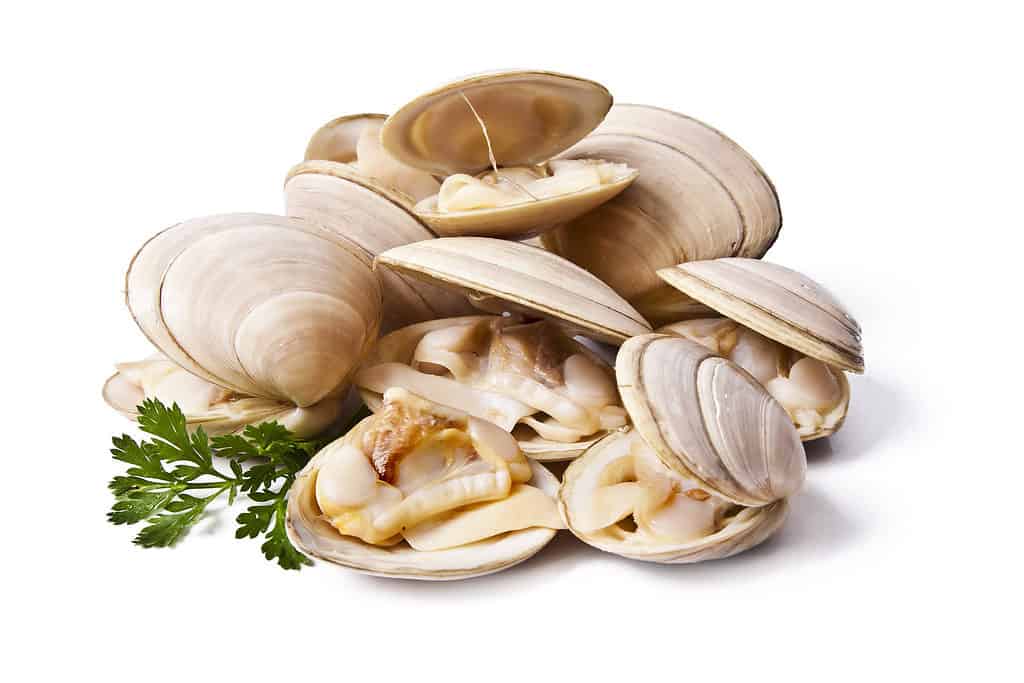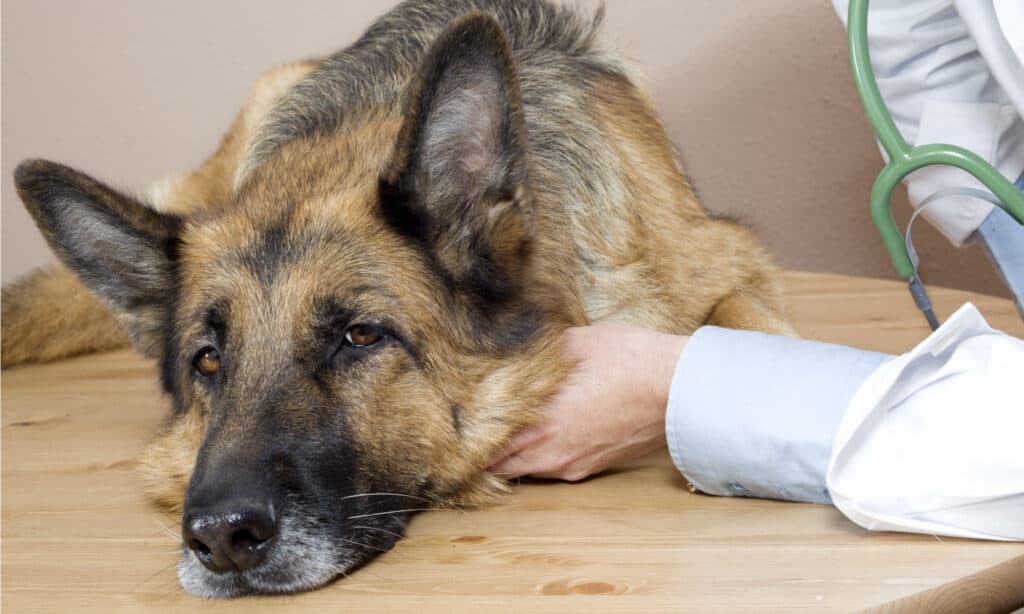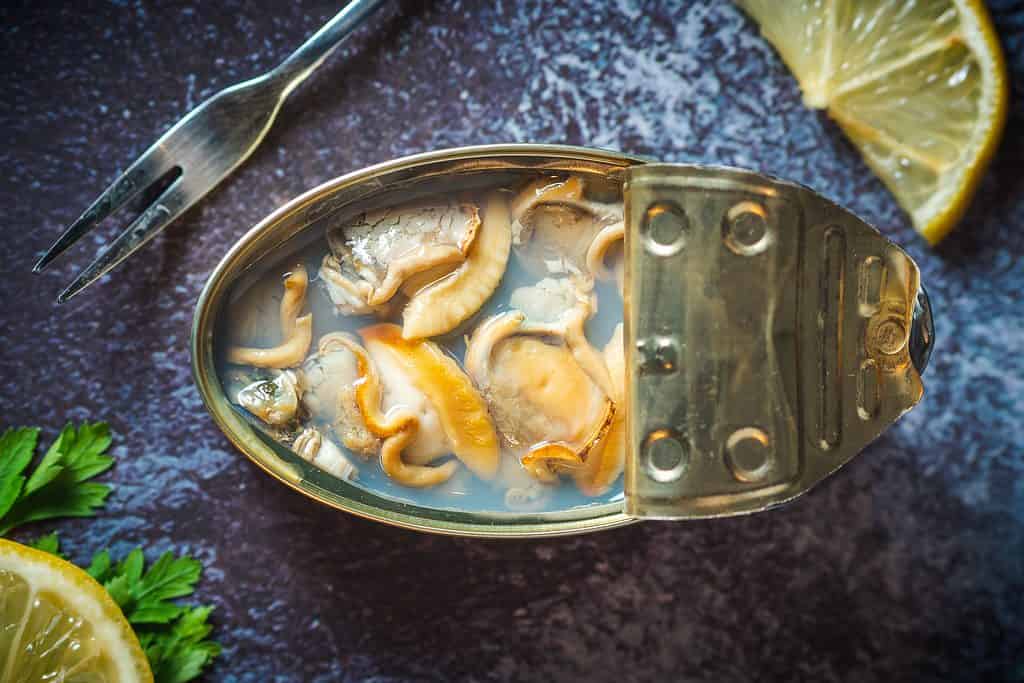You may already know that some fish are dangerous for dogs to eat. But you also might love giving your dog new treats to enjoy, and this might leave you wondering: can dogs eat clams?
Clams are safe for dogs to eat in small portions as long as they’re cooked, unseasoned, and served without the shell. Raw clams can cause paralytic shellfish poisoning (PSP), with symptoms like instability, excessive drooling, weakness, and vomiting.
In this article, we’ll talk about whether dogs can eat clams, the benefits and risks, and more.

Clams are safe for dogs to eat in small portions as long as they’re cooked, unseasoned, and served without the shell.
©carbello/Shutterstock.com
Are Clams Safe for Dogs to Eat?
Clams are safe for dogs as an occasional treat. However, they shouldn’t eat them all of the time and only in small portions. 1-2 clams, or less for small dogs, are plenty!
Avoid feeding your dog the clam shell, as they can present a choking hazard or create a bowel obstruction if eaten.
Make sure to always feed clams cooked and plain, without seasoning. Human foods that contain clams might not be fully safe for dogs, even if the clams themselves aren’t harmful.
Benefits of Clams for Dogs
Clams contain the following nutrients that are healthy for dogs:
- Protein: Protein helps your dog’s body to develop a healthy skin, coat, muscles, and bones. It also helps to repair cells and keep their immune system healthy.
- Zinc: Zinc helps both thyroid and immune system function. It also helps your dog to heal if they’re wounded.
- Iron: Iron helps to create hemoglobin, which carries oxygen and nutrients throughout your dog’s body through their red blood cells.
- Omega 3 fatty acids: Omega 3s benefit a dog’s eye and brain development, strengthens their immune system, and may help with disease in old age such as arthritis or dementia.
- Magnesium: Magnesium promotes heart, bone, and immune system health. It also helps your dog’s nerves and muscles to function.
All dogs should receive these nutrients in their daily food, so supplementing with clams or other treats isn’t needed. However, it’s nice to know that the treats we feed our dogs are healthy!
Risks of Clams for Dogs

Always cook clams before serving them to your dog, as raw shellfish can cause
paralytic shellfish poisoning
(PSP).
©Roger costa morera/Shutterstock.com
Raw Clams can Make Dogs Sick
Always cook clams before serving them to your dog, as raw shellfish can cause paralytic shellfish poisoning (PSP).
Symptoms of PSP in dogs include:
- Instability
- Excessive drooling
- Weakness
- Vomiting
PSP can be deadly, especially without treatment. If your dog shows signs of PSP after eating raw clams, it’s important to see a veterinarian right away. This might mean calling your nearest emergency vet if your primary vet is unavailable.
Seasonings can be Toxic to Dogs
Some seasonings used while cooking clams can be toxic to dogs. If you want to serve your dog clams, it’s best to cook them separately from your own foods and keep them plain.
Butters and oils also aren’t healthy for your dog, so pass on these as well as added salt. It might seem bland, and would be for a person–but your dog will appreciate the treat even without all of the additives.
If your dog does eat clams with unhealthy ingredients, they’ll likely be okay. Monitor them for signs of illness and call your veterinarian if your dog gets sick.
Toxic ingredients can be more dangerous, and I advise calling a veterinarian or pet poison hotline for help if your dog has eaten clams containing toxic spices or other ingredients.
Let them know the ingredients, how much was eaten, and whether your dog is currently showing symptoms. You may be advised to bring your dog in for treatment, or to monitor them at home for signs of illness.
Canned Clams aren’t Healthy for Dogs

Canned clams typically contain high amounts of salt and other preservatives. These aren’t healthy for your dog and can make them sick, especially in high amounts.
©Manuel Barrena/Shutterstock.com
Canned clams typically contain high amounts of salt and other preservatives. These aren’t healthy for your dog and can make them sick, especially in high amounts.
Although salt is a necessary part of every dog’s diet, they get enough of it in a balanced dog food. They don’t need excess in their treats.
High amounts of salt can cause salt poisoning or toxicity. This can lead to dehydration and even kidney damage.
Symptoms of salt poisoning include:
- Vomiting
- Diarrhea
- Decrease in appetite
- Tiredness
- Lack of coordination
- Excessive thirst or urination
- Tremors
- Seizures
- Coma
If you see signs of salt poisoning after your dog eats any salty food, including canned clams, please see a veterinarian right away. Waiting can lead to your dog becoming more dehydrated and, potentially, damage to their kidneys.
Once kidneys are damaged, there is no undoing that damage. This can lead to chronic illness in the form of kidney disease, or even organ failure if they’re too severely damaged.
Salt poisoning can be deadly, especially if it is severe and untreated. This is why it’s important to take action right away.
Up Next
- Can Dogs Eat Crab or Not? What Science Says
- Can Dogs Eat Shrimp Safely? What Are The Risks?
- Can Dogs Eat Oysters
The photo featured at the top of this post is © siloto/Shutterstock.com
Ready to discover the top 10 cutest dog breeds in the entire world?
How about the fastest dogs, the largest dogs and those that are -- quite frankly -- just the kindest dogs on the planet? Each day, AZ Animals sends out lists just like this to our thousands of email subscribers. And the best part? It's FREE. Join today by entering your email below.
FAQs (Frequently Asked Questions)
Can dogs eat clams?
Clams are safe for dogs to eat in small portions as long as they’re cooked, unseasoned, and served without the shell. Raw clams can cause paralytic shellfish poisoning (PSP), with symptoms like instability, excessive drooling, weakness, and vomiting
What about canned clams? Can dogs eat them?
Canned clams typically contain high amounts of salt and other preservatives. These aren’t healthy for your dog and can make them sick, especially in high amounts.
Thank you for reading! Have some feedback for us? Contact the AZ Animals editorial team.






